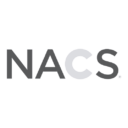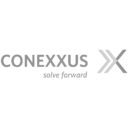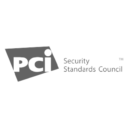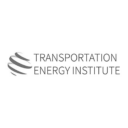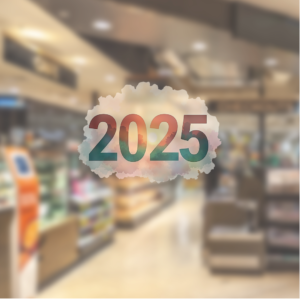
Insights
Maximize Your C-Store’s Future Value: Why Preparation Starts Years Ahead

You’ve poured countless hours, navigated endless challenges, and invested immense energy into building your convenience retail business. You know every corner of your stores, the rhythm of your customers, and the dedication of your team. It’s more than just a business; it’s a significant part of your life’s work.
But have you considered its next chapter? It’s a question every owner eventually faces. Whether your vision involves retirement, passing the reins to family, or a strategic sale, a transition is likely somewhere down the road. If you do not have your next in line for succession, it is likely because family members or others who had the ability to lead the organization have gone another direction or don’t have an interest in doing so. And if those who really understand the business or share your values are not in line to take the company forward, this puts you in a precarious position of not having the ability to turn the business over to a new leader or management team when you are ready. You’ve put the time in and with the right value for the company, it might be a good time for you to shift gears in a way that allows you to transition on a high note and take that generational wealth back to your family.
The critical question isn’t if, but when and how you move forward. More importantly, regardless of the timeline, is your business positioned today to realize its maximum potential value and ensure a smooth handover when that time comes? When was the last time you truly stepped back from the daily grind to look at your business through the eyes of a potential future owner, successor, or buyer? Thinking about this now isn’t about putting up a “For Sale” sign tomorrow; it’s about smart, strategic planning for the future you’ve worked so hard to build.
Why Think About Your Preparedness Now? The Shifting Landscape
The convenience retail world isn’t static. We’re seeing ongoing consolidation, new types of investors entering the market (like private equity), and an increasing focus by larger players on optimizing their portfolios – shedding some stores while acquiring others. Technology continues to evolve, customer preferences shift, and economic factors create both headwinds and tailwinds.
This dynamic environment presents potential opportunities for well-positioned, prepared businesses. A strong market might offer a favorable window for those considering an exit. Conversely, for businesses that aren’t prepared, these same shifts can present risks – being caught off guard by competitive pressures or finding fewer attractive options when a transition becomes necessary. This isn’t about predicting the future; it’s about acknowledging that external factors make internal preparedness more critical than ever. Being ready means having control over your destiny, regardless of market timing.
The High Cost of Waiting: Value Left on the Table
Here’s a hard truth we’ve seen play out time and again: the biggest mistake many successful C-store owners make is waiting too long to prepare for an eventual transition.
Thinking you can simply “decide to sell” and achieve the best outcome within a few months is often a costly misconception.
Why? Because maximizing your business’s transferable value isn’t a quick fix. Achieving peak value – the highest price and best terms – typically requires 24 to 36 months of focused preparation (think roughly 6 months of planning, 6 months of execution to make improvements, and then a crucial 12 months or more of ratable performance to prove those improvements). Yes, it can sometimes be done in a shorter window; however, you will almost certainly leave money on the table.
It takes time to implement operational improvements and prove their impact on the bottom line; buyers need to see sustained results (usually 12+ months) to give you full credit. Cleaning up financial records, maximizing contracts, optimizing your retail portfolio (assets), or addressing deferred maintenance isn’t an overnight job. Building brand recognition or strengthening your management team also requires a runway.
Waiting until you need or want to exit often leads to painful consequences:
- Lower final price (valuation discount)
- Difficult due diligence: Disorganized financials or operational issues that bog down the process, create frustration and erode trust
- Deals falling apart late stage
- Reduced pool of interested premium buyers
- Loss of control: Being unprepared can force you into accepting less favorable terms or selling on someone else’s timeline
Consider two hypothetical owners:
Owner A starts strategically preparing three years before their target exit date, focusing on efficiencies, improving and documenting processes, and cleaning up financials. This preparation led to improved financial performance, sustained over twelve months.
Owner B runs a good business but only starts thinking about “getting ready” six months before they hope to sell. Performance has been relatively consistent over the years, but low margins have also been a common theme.
Owner A likely experiences a smoother process, attracts more interested buyers, commands a higher price, and dictates better terms. Owner B faces a stressful scramble, potentially uncovering costly issues at the last minute, and likely leaving significant money on the table.
In an industry where businesses are often sold on multiples of EBITDA, that “money left on the table” adds up fast. Every extra $100,000 you successfully add to your bottom line through smart preparation gets multiplied – potentially 6, 7, 8 times or much more depending on your business and current market conditions – in your final valuation. You could literally be leaving millions on the table by not preparing adequately. Which position would you rather be in?
Pillars of Maximum Value: Building a Transferable Asset
So, what does “preparation” truly involve? It’s about strengthening the core pillars that define a high-value, transferable business – the things sophisticated successors and buyers look for:
-
Pillar 1: Peak Profitability & Operational Efficiency
This is about proving your business is a well-oiled profit engine. It goes beyond just sales figures. Are your key merchandise, foodservice, and fuel programs compelling traffic drivers optimized for maximum margin? Are operating costs tightly managed? Are your inventory systems efficient? Sometimes, it even involves strategically assessing whether all locations strongly contribute to the bottom line (asset optimization concept). Buyers pay a premium for consistent, efficient, and demonstrable profitability.
-
Pillar 2: Strong Strategic Positioning & Brand Appeal
What makes your business stand out beyond the numbers? This includes your reputation in the community, the strength and loyalty of your customer base, and perhaps a recognized local brand. Creating a strong brand within the industry gives you the recognition you need to have potential buyers lined up at the door and to maximize the multiples you can command. These factors reduce the perceived risk for a buyer and can significantly boost the multiple they are willing to pay.
-
Pillar 3: Financial & Operational Readiness
Can you easily prove your success and make it simple for a buyer to take over? This means having clean, timely, and easily understandable financial statements (preferably reviewed or audited). It means having key operational processes documented, and important contracts (leases, supplier agreements, franchise agreements) organized and transferable. This transparency builds immense buyer confidence and dramatically smooths the due diligence process, preventing delays or last-minute price adjustments.
Strengthening these pillars isn’t complex, but it requires focused effort over that crucial 24–36-month window to show sustained results and true readiness.
Your Partner in Long-Term Value
Navigating this preparation journey while running your day-to-day business can feel daunting. That’s where an experienced advisor comes in. At W. Capra, we specialize in the convenience retail industry. We understand the unique challenges and opportunities you face. We act as strategic partners, helping owners like you assess readiness, identify key areas for value enhancement, and develop a confidential, long-term plan tailored to your specific goals – whether an exit is three years away or simply a future consideration. Our initial conversations are always exploratory and strictly confidential, designed to provide insight, not pressure.
Conclusion: Take Control of Your Future
Thinking about the next chapter of your business isn’t just about an eventual exit; it’s about maximizing the return on your life’s work and ensuring a smooth transition when the time is right for you. Proactive preparation, started years ahead, puts you in control. It allows you to address weaknesses, amplify strengths, and ultimately position your business to command its maximum potential value. It’s the smartest way to secure the best possible outcome for the business you’ve poured everything into.
Is your business truly positioned to capture its maximum future value? Contact us to explore how planning now can secure your future success.
How Seamless is Your Customer Journey?
A seamless customer journey starts with an honest assessment of your operations. Most retailers know they need to create value […]
Why You Need An Automation Journey Map
Investment isn’t enough. To maximize the potential of retail automation technology, companies need a deliberate approach. Most of the business […]
Turn Your Customer-First Mantra Into Strategic Action
Retailers have been saying it for years, “We need to put the customer at the center of everything we do.” […]
Related Insights
6 Reasons Convenience and Energy M&A Is Poised to Soar
While mergers and acquisitions have always been a part of the landscape in the convenience and energy industries, our experts […]
The Cost of Poor Quality Assurance for Point-of-Sale and Back Office Systems in Petroleum Retail
Quality Assurance (QA) is vital to ensure that those who use the tool daily can replicate basic functions AND access the advanced technology and process automation they were promised during sales demos.
CSP Magazine – What C-Store Retailers Need to Do to Succeed in 2025
This article, by W. Capra’s Tom Newbould as a guest author, was published in the February 2025 edition of CSP […]
The Changing Role of the CIO
It used to be that a retailer’s chief information officer would spend most of his or her time concerned with […]
Want to stay in touch? Subscribe to the Newsletter
